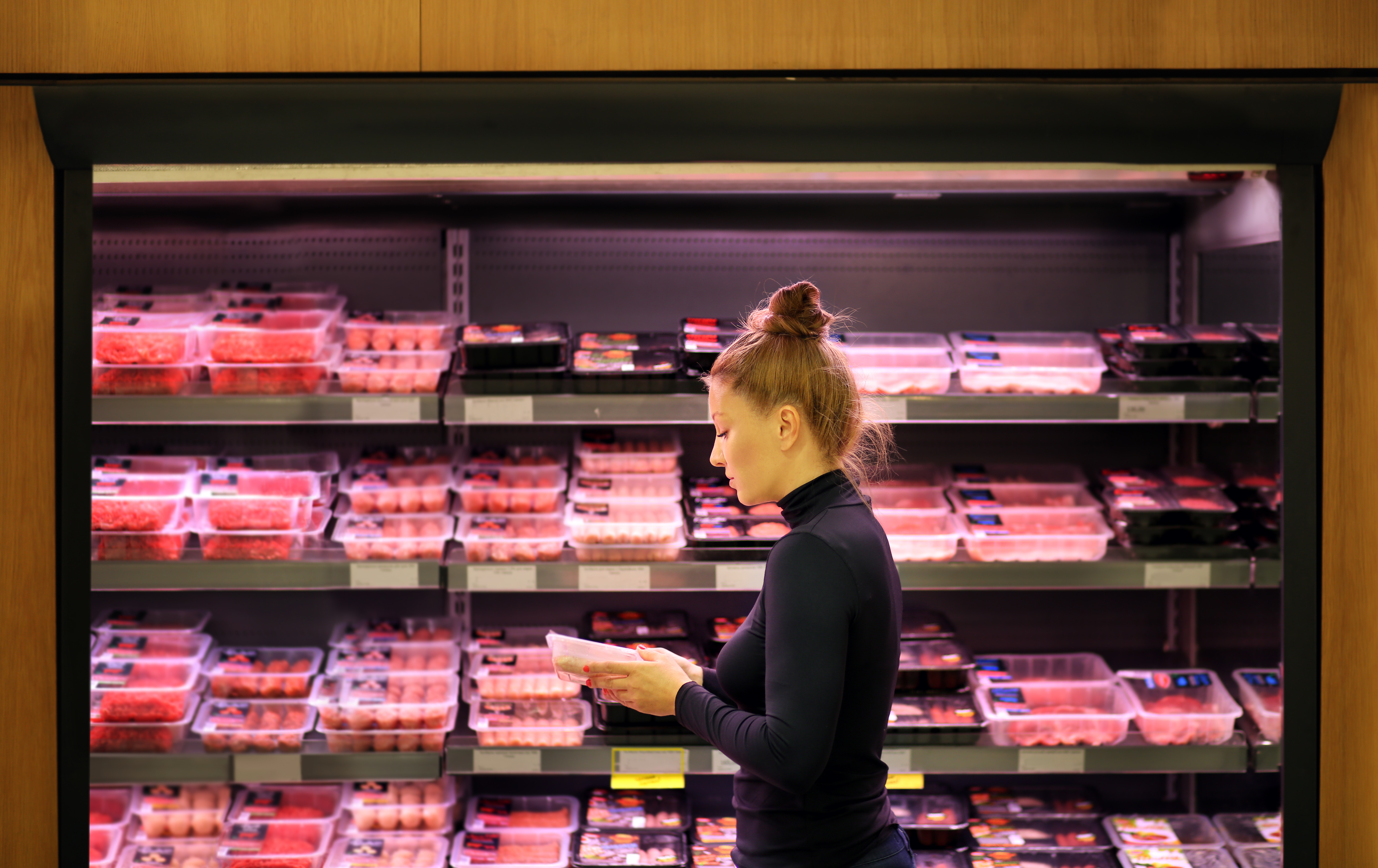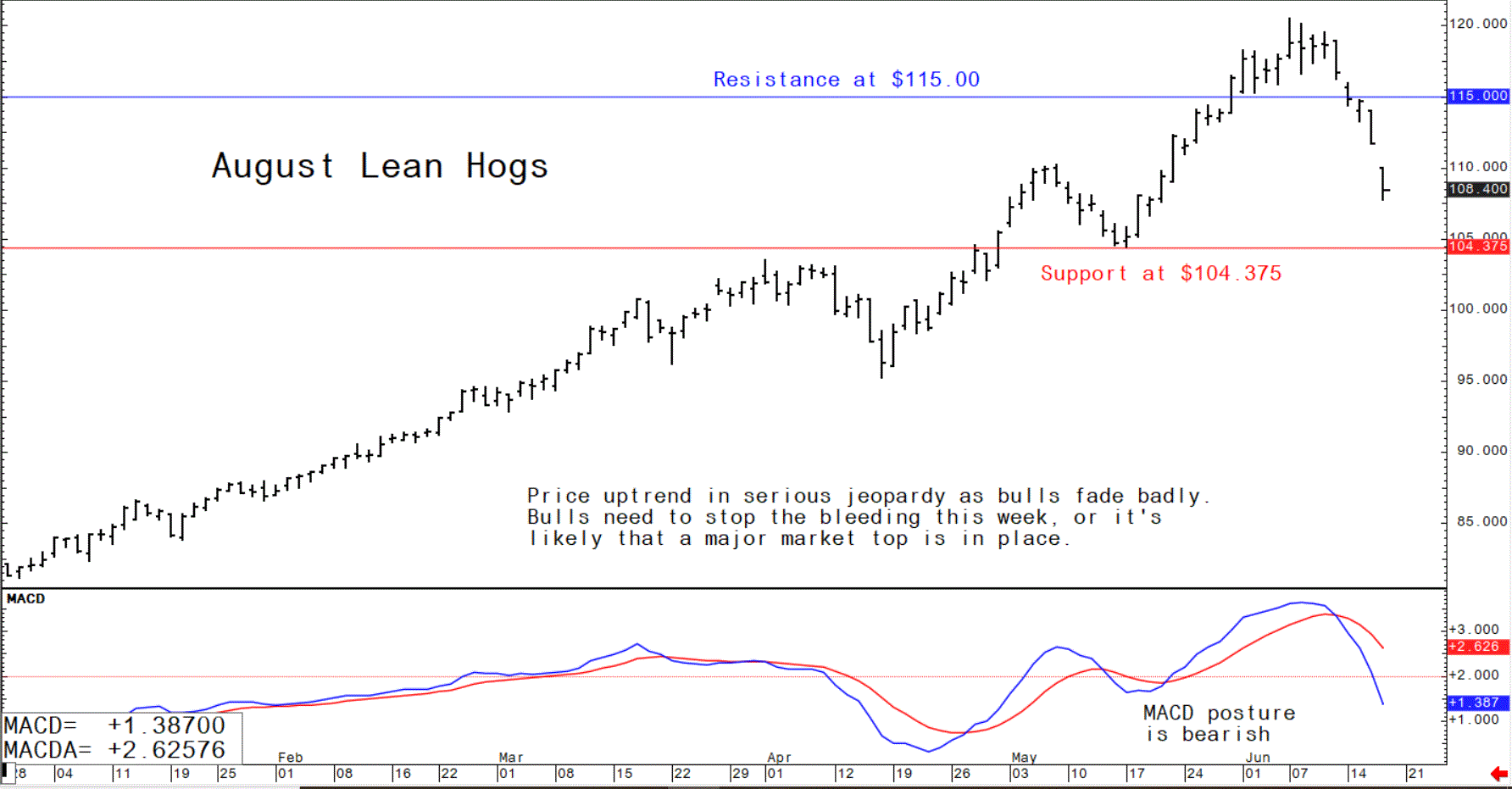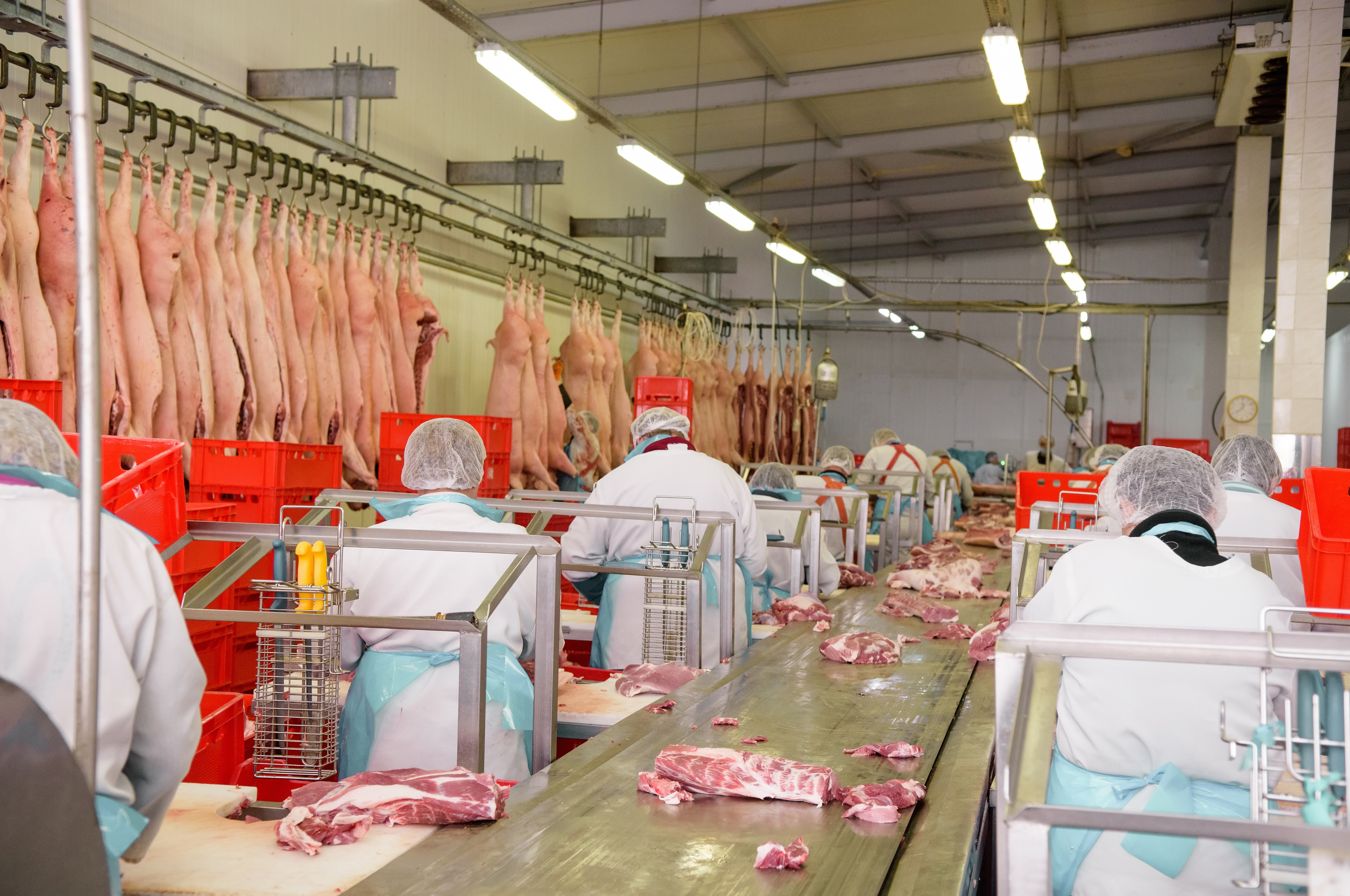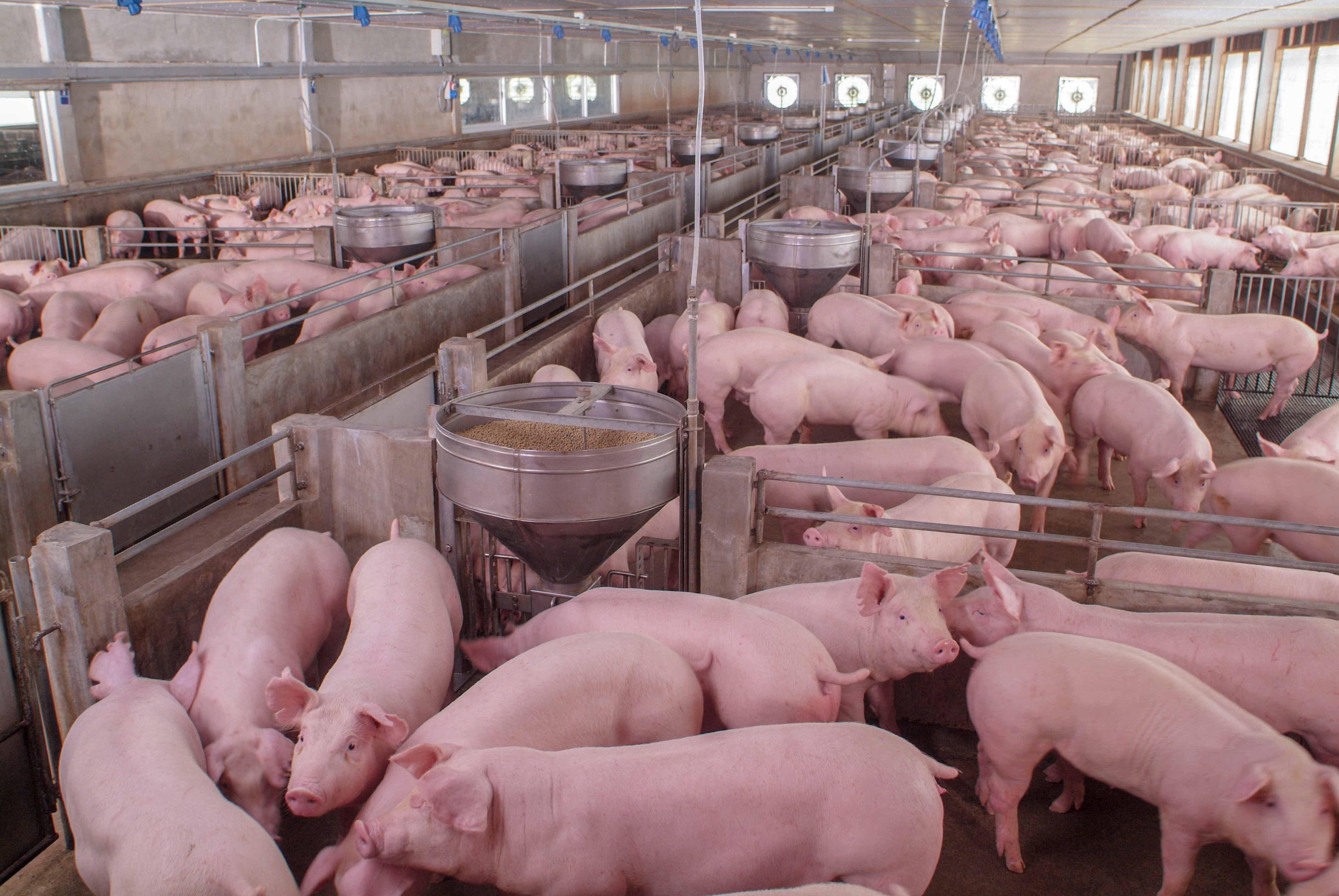



Pig outlook: lean hog futures’ shine coming off a bit
The market top for US lean hog futures begins to appear and the USDA introduces sweeping changes to tackle recurring issues in the livestock sector.The pig trader's perspective
This week has seen a dive in live hog and pork prices amid reports China’s sow herd has been rebuilt to around 98.4% of its pre-African swine fever levels, sparking concerns about a major slowdown in Chinese pork purchases. Still, some say China will likely face a shortage of live hogs the second half of the year.

The declines in lean hog futures seen so far the past few sessions can be deemed a normal corrective pullback following the recent strong gains. However, more strong selling pressure on Thursday and Friday, including a technically bearish weekly low close on Friday, would be a clue the futures market has put in a major top.
Expectations for higher pork supplies coming to market starting in August are weighing on futures, though pork belly and ham stockpiles remain tight. The US hog and pork complex often soften after the July Fourth holiday as demand for pork slips and hog supplies build. That’s likely weighing on deferred futures contracts.
The next week’s likely high-low price trading ranges
- August lean hog futures-$110.00 to $116.25 and with a sideways-lower bias
- July soybean meal futures-$370.40 to $395.00, and with a sideways
- July corn futures-$6.30 to $6.90, and a sideways bias

© Jim Wyckoff
Latest news from the US pork industry
US pork export sales rebound in latest week
USDA Thursday 17 June reported US pork net sales of 29,300 metric tonnes (MT) for 2021 were up 49% from the previous week and 8% from the prior four-week average.
Increases primarily for Mexico (19,100 MT, including decreases of 700 MT), Japan (5,300 MT, including decreases 200 MT), South Korea (2,300 MT, including decreases of 200), Canada (1,100 MT, including decreases of 600 MT), and the Dominican Republic (700 MT), were offset by reductions for China (400 MT).
Exports of 38,100 MT were up 39% from the previous week and 4% from the prior four-week average. The destinations were primarily to Mexico (15,600 MT), China (8,800 MT), Japan (4,500 MT), South Korea (2,900 MT), and Canada (1,500 MT).

USDA Secretary suggests US livestock industry to see changes coming
It was clear listening to USDA Secretary Tom Vilsack, in testimony to Congress this week, that big changes are coming to the livestock sector, notably for meat processors and livestock pricing.
Vilsack emphasized USDA plans to bolster small-, medium-sized meat and poultry processors and to expand overall processing capacity. He suggested farmers are being unfairly hurt by the patent protection that their suppliers enjoy, implying that was discouraging competition in the seed business. Vilsack thinks input costs are one reason many farmers can't support themselves on farm income, but patent protection was also contributing to the problem.
“We've got to do more for our cattlemen, the concentration in the processing end is too high. We need more pricing transparency, more competition,” stressed subcommittee Ranking Member John Hoeven (R-ND).
Vilsack signaled he agreed with those sentiments and pointed to USDA’s plans to revisit rulemaking around the Packers and Stockyards Act (PS&A) as one response the department is taking. “The spring regulatory agenda did indicate our desire to strengthen Packers and Stockyards to begin that process to draw bright lines and clear lines in terms of what is appropriate and what is not,” Vilsack pointed out. USDA was looking at offering low-interest loans for new processing facilities, the secretary added.
In terms of price discovery, Vilsack said USDA efforts to bolster meat processing capacity should have positive knock-on effects. “One way of getting price discovery is by having more processing capacity and more processing facilities getting more data and information,” he explained.
“I think you will see over the course of the summer that we have a pretty unique approach to this that I think will result in significant expansion of processing.” One key to those plans, said Vilsack, is leveraging federal, state, and private industry resources in partnership to lay the foundation for a meat processing expansion.

Senator John Tester (D-Montana) said one issue facing livestock markets, like the broader ag sector, is rising consolidation in the industry. Tester asked Vilsack to weigh in on bipartisan legislation he introduced with Senator Chuck Grassley (R-Iowa), the Meat Packing Special Investigator Act, that would create an “Office of the Special Investigator for Competition Matters” within the USDA’s Packers and Stockyards Division, with subpoena power to investigate issues around market competition.
“I think it is a good proposal, I think it is part of what needs to be done,” Vilsack responded. “Clearly [regarding the PS&A], the lines need to be very specifically strengthened and drawn so that it's clear what is an undue preference, it’s clear what is unfair practices, it’s clear what the scope of work ought to be, and it’s clear what competition standard we have to reach.”
Tester and Senator Jerry Moran (R-Kansas) asked Vilsack about implementation of provisions providing $60 million in funds to help small- and medium-sized meat facilities meet federal inspection requirements — a prerequisite for interstate sales.
Vilsack said the department intends to announce plans to implement the program soon. He said the department would be making announcements about funding for two small programs authorized to help small-scale processors. One would help processors qualify for federal inspection, which would enable them to sell across state lines and into export markets. Another would reduce the overtime fees that small processors must pay for federal inspection services.

Tester and Moran also emphasized the need to allow more state-inspected meat and poultry facilities sell products across state lines — including via USDA’s existing Cooperative Interstate Shipment (CIS) program. Vilsack said “the challenge is basically getting them to make sure that they have the equivalency in terms of inspection. And the reason this is important is because we don't want to basically create chaos in the export market.” Without such equivalency “we may have difficulty selling our beef and so forth, overseas,” he explained.
Meanwhile, Moran asked Vilsack about implementation of other relief provisions to lower federal meat inspector costs for small- and medium-sized meat processors. Vilsack said an announcement should come soon on that front as well, adding that he would like to expand the program further. “Our budget contains another $44 million that would allow that program to be expanded not just for year two, but for maybe up to five years of opportunity for those small and midsize producers,” Vilsack remarked.
Tester also raised the recent JBS cyberattack that took scores of the company’s meat processing facilities offline. “Can you just give us an idea of what you're doing around that with the Department of Justice [DOJ], or [otherwise]?” he asked Vilsack.
“The first order of business, I think, is to make sure that everyone in the food industry and food business understands the steps that they need to take to harden their systems,” Vilsack responded. He added that USDA intends to “convene food groups to make sure they understand and appreciate precisely what is required.” Regarding DOJ, he said USDA will be “more than happy to cooperate with any legal investigation.”

Swine sector updates from China
China wants producers to maintain hog production
The average hog-to-grain ratio dropped below 6:1 in China, falling below the level where most farmers make money, the National Development and Reform Commission (NDRC) reported.
It issued a level-3 warning about an excessive drop in live hog prices and urged pig farmers to keep production capacity at a reasonable level. The state economic planning agency said it will closely monitor pig production and market price trends and “carry out reserve adjustments in a timely manner and promote the smooth operation of the live pig market.”
Live hog prices currently average 14.68 yuan ($2.29) per kilogram, a two-year low and a 60% drop from the start of the year, according to Shanghai JC Intelligence. NDRC says the price drop has stemmed from farmers sending heavy pigs to slaughter, a rise in pork imports and weak seasonal demand.

Farmers are unlikely to heed government advice, and a shortage of live hogs is likely the second half of the year, according to Pan Chenjun, senior analyst at Rabobank.
China’s sow herd nears pre-ASF levels
China’s pig herd surged 23.5% in May compared with the year prior, according to state media citing the country’s ag ministry. The country’s sow herd was up 19.3% from year-ago during May and at 98.4% of levels seen at the close of 2017—before African swine fever (ASF) hit. Xin Guochang, an official with the agricultural ministry's Animal Husbandry and Veterinary Bureau, told local media “We can now say with complete confidence that the original three-year mission for the restoration of pig production has been completed ahead of schedule.”









